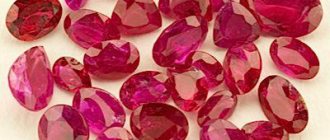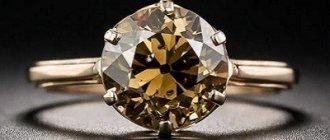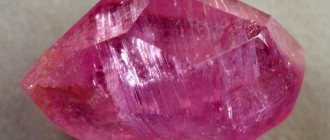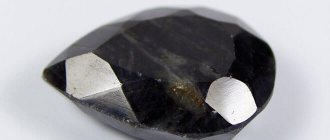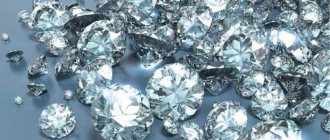1. Purple stones - transparent and opaque - names, properties, photos
2. Varieties of lilac gems and their shades - from light to lilac and dark purple
2.1 Violet colored gemstones – what are their names, photos, properties
2.2 Popular semi-precious minerals of lilac color - characteristics, photos, magical and medicinal properties
2.3 Decorative and ornamental natural minerals
3. Properties of purple gems
3.1 Unique healing properties of natural crystals - how they are used in medicine
3.2 Magic power - what qualities are given to its owners
4. Which lilac stones talismans are recommended for women
5. Which purple stone amulets are suitable for men
6. Energy of stones – which zodiac signs are suitable for which specimens
7. Why are stones of this color range valued among jewelers?
8. How to choose the right purple stone
9. Compatible with other minerals in rings, bracelets, earrings and other jewelry
Due to their unusual, bewitching appearance, purple stones have earned a reputation as mystical and mysterious. The energy of correctly selected minerals gives owners strength, additional capabilities and protects them from negativity. We tell you who purple stones are suitable for and how to wear the talisman correctly.
Purple stones - transparent and opaque - names, properties, photos
Gems of lilac-violet tones are good for their ability to attract the attention of others. Deep shades with light reflections and holographic tints leave no chance for jewelry to go unnoticed. Stones complement outfits for almost any occasion, in basic or bright colors. Purple looks good with white, beige and grey, orange, yellow and turquoise.
Jewelers value minerals of mystical shades for their versatility. Purple stones are suitable for creating women's and men's jewelry. Precious crystal-like specimens become part of earrings, pendants, bracelets and rings, while ornamental and semi-precious ones are included in brooches, beads, and rings.
Origin
The rocks at the sites where the mineral was found date back to the Middle Jurassic to Early Cretaceous periods. Rock with charoites is sometimes called charoitite .
In general, the origin of charoite is still controversial among experts. It seems that charoites are formed “as a result of metasomatic replacement of host strata.”
Or maybe they are of magmatic origin. There is a connection with carbonatite alkaline melts... It’s not for us, geologists, to puzzle over this
